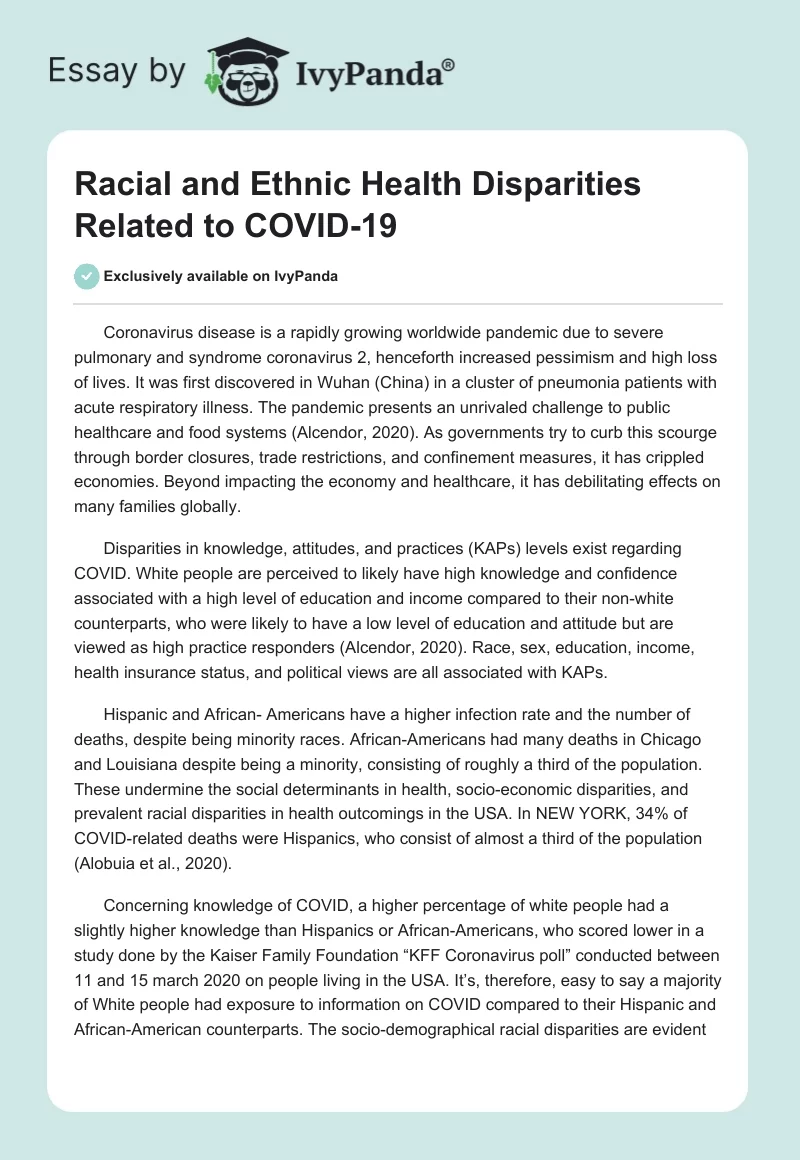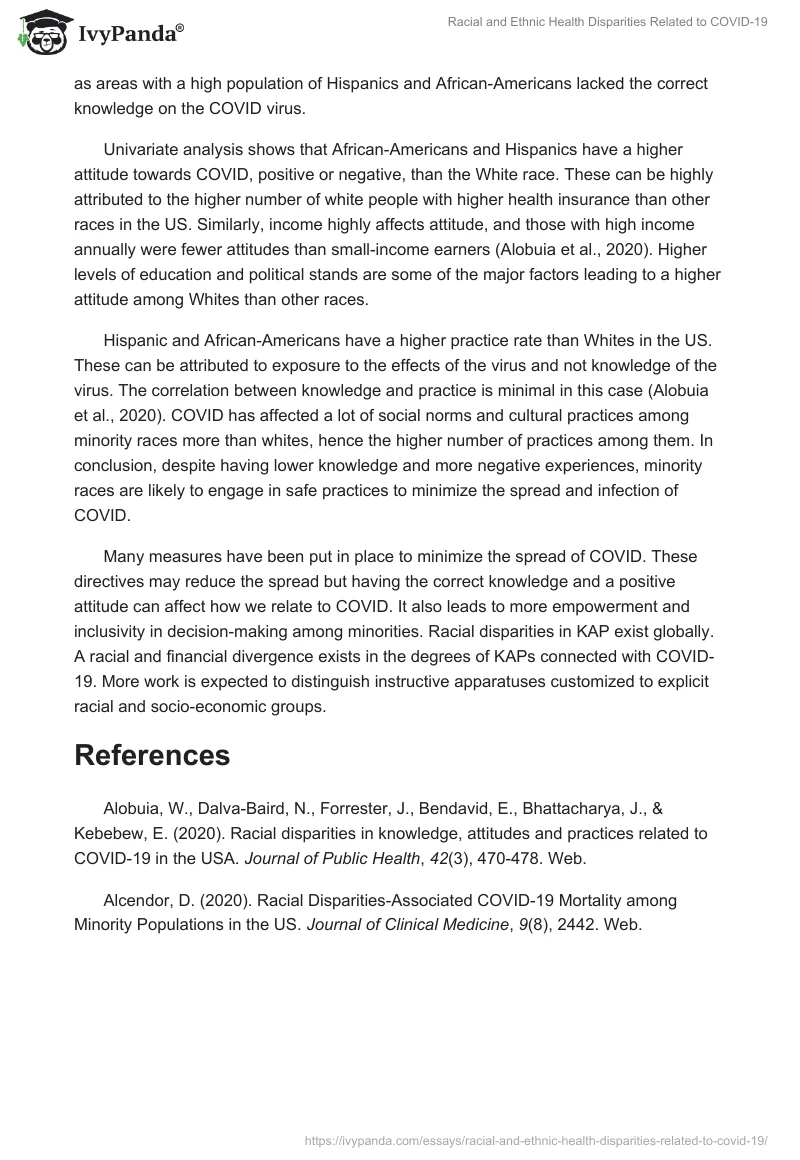Coronavirus disease is a rapidly growing worldwide pandemic due to severe pulmonary and syndrome coronavirus 2, henceforth increased pessimism and high loss of lives. It was first discovered in Wuhan (China) in a cluster of pneumonia patients with acute respiratory illness. The pandemic presents an unrivaled challenge to public healthcare and food systems (Alcendor, 2020). As governments try to curb this scourge through border closures, trade restrictions, and confinement measures, it has crippled economies. Beyond impacting the economy and healthcare, it has debilitating effects on many families globally.
Disparities in knowledge, attitudes, and practices (KAPs) levels exist regarding COVID. White people are perceived to likely have high knowledge and confidence associated with a high level of education and income compared to their non-white counterparts, who were likely to have a low level of education and attitude but are viewed as high practice responders (Alcendor, 2020). Race, sex, education, income, health insurance status, and political views are all associated with KAPs.
Hispanic and African- Americans have a higher infection rate and the number of deaths, despite being minority races. African-Americans had many deaths in Chicago and Louisiana despite being a minority, consisting of roughly a third of the population. These undermine the social determinants in health, socio-economic disparities, and prevalent racial disparities in health outcomings in the USA. In NEW YORK, 34% of COVID-related deaths were Hispanics, who consist of almost a third of the population (Alobuia et al., 2020).
Concerning knowledge of COVID, a higher percentage of white people had a slightly higher knowledge than Hispanics or African-Americans, who scored lower in a study done by the Kaiser Family Foundation “KFF Coronavirus poll” conducted between 11 and 15 march 2020 on people living in the USA. It’s, therefore, easy to say a majority of White people had exposure to information on COVID compared to their Hispanic and African-American counterparts. The socio-demographical racial disparities are evident as areas with a high population of Hispanics and African-Americans lacked the correct knowledge on the COVID virus.
Univariate analysis shows that African-Americans and Hispanics have a higher attitude towards COVID, positive or negative, than the White race. These can be highly attributed to the higher number of white people with higher health insurance than other races in the US. Similarly, income highly affects attitude, and those with high income annually were fewer attitudes than small-income earners (Alobuia et al., 2020). Higher levels of education and political stands are some of the major factors leading to a higher attitude among Whites than other races.
Hispanic and African-Americans have a higher practice rate than Whites in the US. These can be attributed to exposure to the effects of the virus and not knowledge of the virus. The correlation between knowledge and practice is minimal in this case (Alobuia et al., 2020). COVID has affected a lot of social norms and cultural practices among minority races more than whites, hence the higher number of practices among them. In conclusion, despite having lower knowledge and more negative experiences, minority races are likely to engage in safe practices to minimize the spread and infection of COVID.
Many measures have been put in place to minimize the spread of COVID. These directives may reduce the spread but having the correct knowledge and a positive attitude can affect how we relate to COVID. It also leads to more empowerment and inclusivity in decision-making among minorities. Racial disparities in KAP exist globally. A racial and financial divergence exists in the degrees of KAPs connected with COVID-19. More work is expected to distinguish instructive apparatuses customized to explicit racial and socio-economic groups.
References
Alobuia, W., Dalva-Baird, N., Forrester, J., Bendavid, E., Bhattacharya, J., & Kebebew, E. (2020). Racial disparities in knowledge, attitudes and practices related to COVID-19 in the USA. Journal of Public Health, 42(3), 470-478. Web.
Alcendor, D. (2020). Racial Disparities-Associated COVID-19 Mortality among Minority Populations in the US. Journal of Clinical Medicine, 9(8), 2442. Web.


